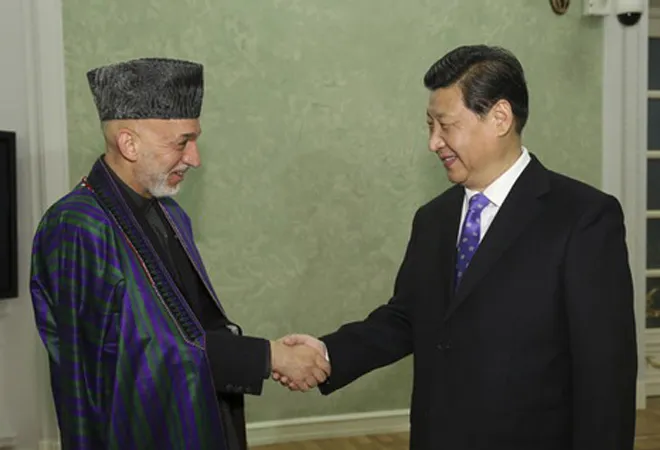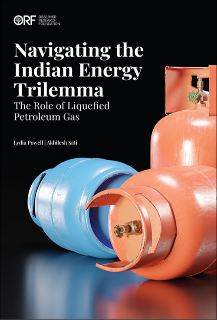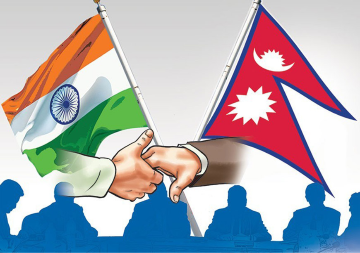As the Donald Trump administration is riven with internal contradictions amid the escalating crisis in Afghanistan, what the US president’s Kabul strategy comprises raises profound questions. When it comes to Afghanistan, China inevitably lurks underneath as a force with which the US must reckon with. In the past, the two states positioned parallel strategies vis-à-vis the troubled nation. In the recent times, however, a distracting detente has burgeoned between Beijing and Moscow, attracting criticism from Washington.
Meanwhile, a range of stakeholders, including not just China and Russia but also Iran and Pakistan, have overtly challenged the US military failure to suppress the crisis, never mind stemming the large-scale narcotics trafficking from the country. As Beijing’s regional stake has risen, guided by its security and economic goals, this has served as the stepping stone for enhanced involvement in Afghan affairs. In that light, Russian President Vladimir Putin has emerged as a like-minded ally in whom his Chinese counterpart Xi Jinping can confide when dealing with the Taliban.
Alongside that, Beijing has markedly accelerated its economic transactions and diplomatic deliberations with Afghanistan, complemented by development cooperation. A pertinent backdrop is however the rising security threat in China stemming from the Xinjiang region. As a precautionary measure, China has emboldened its counterterrorism and counternarcotics exercises. Similarly, China, Russia and Pakistan have held multiple, bilateral and multilateral, deliberations to establish frameworks to counter the threat of Islamic State (IS).
When Moscow hosted such a multilateral dialogue in February, the US was not invited which speaks loudly of the tensions among these states shadowing the process of reaching a political consensus on Afghanistan.
In this scenario, the US under Trump has committed itself staunchly to fight against the Taliban as well as IS as signalled by the recent dropping of the ‘Mother of All Bombs’ in Afghanistan. With security concerns rising as diplomatic ties weaken with Russia, amid the reverberations of Moscow’s alleged collusion in Trump’s election campaign, Xi’s US visit in April painted a brighter picture.
Over North Korea, the Xi-Trump interactions had supposedly positive outcomes. Hence, with respect to Afghanistan, there is an urgency for the US to reconfigure its strategy towards China as the crisis risks running out of control. For decades, China has conveniently vaunted the Pakistan card to soothe the Afghan Taliban, and that has been the principal element of its Afghan strategy.
In the early 2000s, according to political scientist Andrew Scobell, China’s ambassador to Pakistan Lu Shunlin, secretly met with reclusive Taliban leader Mullah Omar. As Lu’s Taliban counterpart Abdul Salam Zaeef highlights in his 2011 book, My Life with the Taliban, Mullah offered the ambassador assurances that the Taliban ‘will not allow any group to use its territory.’ The Taliban also agreed not to facilitate any attacks on China in exchange for Beijing’s recognition of it as the legitimate government of Afghanistan. Beijing also convinced the Taliban that it would help subdue any potential UN sanctions against the regime.
Even though the Taliban’s alliance with Al-Qaeda posed serious security threats in the light of the insurgency in Xinjiang, the Chinese continued their cooperation. Beijing was keen to secure assurances that the Taliban would not support Uighur militants.
Additionally, the Chinese provided unswerving support to their Pakistani counterparts and indirectly their official and unofficial relationships with the Taliban. Later, as the US formed an alliance against the Taliban regime, China nominally supported ’Operation Enduring Freedom’ to extinguish the Taliban threat and oust the movement from Kabul.
China’s support was well received, yet it continued covertly to assist the Taliban. In the face of the once enveloping threat from that quarter, Kabul claimed that Beijing was maintaining a low profile, offering negligible support towards reconstruction and development.
Indeed, Afghan government officials voiced concerns over the flow of Chinese arms to Taliban fighters in 2005. The US and British media also reported then that ‘Americans fighting in Afghanistan were being killed by Chinese supplied weapons, with the full knowledge and understanding of Beijing of where these weapons are going.’
Taliban and peace
In recent times, with Afghanistan still in the spotlight, China has gathered support for its strategy to initiate peace talks with the Taliban. Beijing’s special envoy to Kabul Deng Xinjian remarked: ‘China has always conveyed to the Taliban that it recognised the Afghan government and has encouraged the Taliban to join the peace process.’
In this triangulated regional milieu, as the US confronts the Taliban as well as the IS, alongside regional partners such as India, it also must urgently negotiate with China to avoid the reappearance of another ideologically-driven regime — albeit a rather different ideology to that in North Korea — in the region. With over 9,000 Nato forces staged on the ground in Afghanistan, Trump has larger stakes in this country than in any other current conflict arena.
While the US has orchestrated its support for an ‘Afghan-led and Afghan-owned’ conflict resolution, it also needs to engage in multilateral negotiations to press China to distance itself from Taliban while engaging cautiously with Pakistan. In this scenario, the US can also build on its relations with India as a willing partner, which has harboured growing suspicion over escalating Taliban extremism in Afghanistan alongside contributing to nation-building efforts there.
The Trump administration confronts a multitude of pressures on Afghanistan from divergent sources: a few advocate complete withdrawal of Nato forces (as earlier promised by the Obama administration), presented as the least-bad option; another section of opinion opts for renewed US engagement with the regional actors to reach a political resolution; and a perceptible fragment of the strategic community has urged plunging more troops into the long-drawn-out Afghan war. Among the global dynamics of the crisis in Afghanistan, continued IS expansion there threatens the stability of western countries, particularly the US.
Hence, the need of the hour is for the US to join hands with willing and like-minded partners to conclude a sustainable strategy for peaceful nation-building in Afghanistan. Abandonment of the turmoil would risk a catastrophe with huge global repercussions.
(The author is a Research Intern at ORF)
This commentary originally appeared in Deccan Herald.
The views expressed above belong to the author(s). ORF research and analyses now available on Telegram! Click here to access our curated content — blogs, longforms and interviews.




 PREV
PREV

